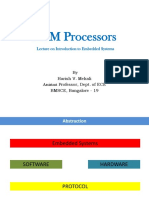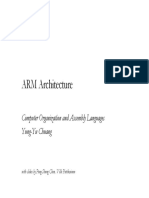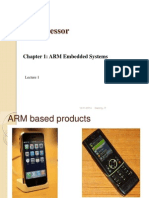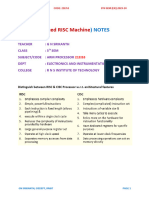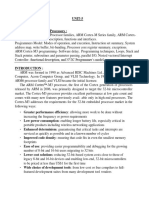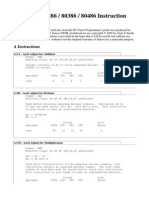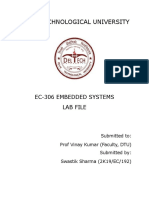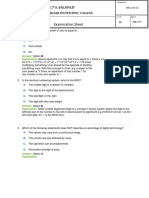0% found this document useful (0 votes)
61 views58 pagesMod1 - Arm - Embedded - System For Unit1 and 2
The document outlines the organization of a syllabus for ARM Embedded Systems, detailing chapters that cover the ARM processor, instruction sets, firmware, operating systems, and cache technologies. It discusses the RISC design philosophy, ARM architecture features, memory types, and peripherals essential for embedded systems. Additionally, it explains the role of initialization code and operating systems in managing hardware resources and executing applications.
Uploaded by
AtiK KhanCopyright
© © All Rights Reserved
We take content rights seriously. If you suspect this is your content, claim it here.
Available Formats
Download as PPTX, PDF, TXT or read online on Scribd
0% found this document useful (0 votes)
61 views58 pagesMod1 - Arm - Embedded - System For Unit1 and 2
The document outlines the organization of a syllabus for ARM Embedded Systems, detailing chapters that cover the ARM processor, instruction sets, firmware, operating systems, and cache technologies. It discusses the RISC design philosophy, ARM architecture features, memory types, and peripherals essential for embedded systems. Additionally, it explains the role of initialization code and operating systems in managing hardware resources and executing applications.
Uploaded by
AtiK KhanCopyright
© © All Rights Reserved
We take content rights seriously. If you suspect this is your content, claim it here.
Available Formats
Download as PPTX, PDF, TXT or read online on Scribd
/ 58





















